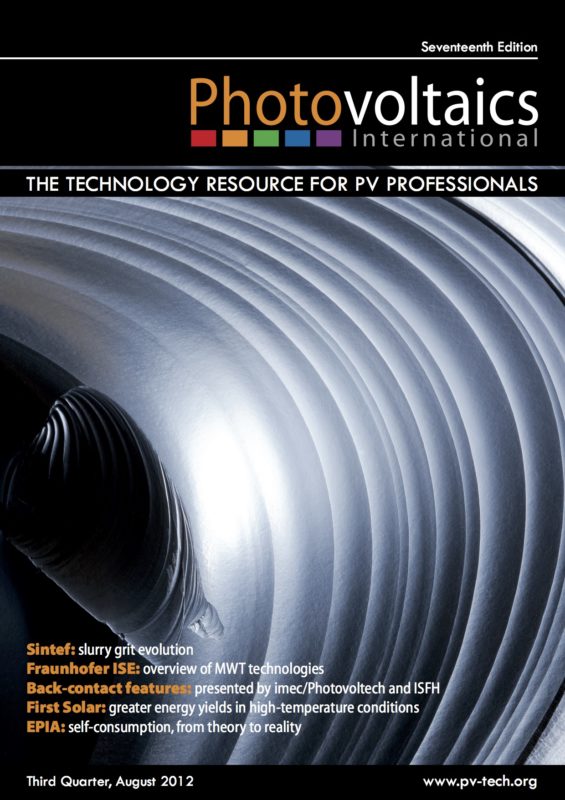By Antonio Cacciato, Manager of the R&D Advanced Processes Group, Photovoltech N.V.; Filip Duerinckx, Photovoltech N.V.; Kasper Baert, R&D Engineer, Photovoltech N.V.; Matthieu Moors, R&D Engineer, Photovoltech N.V.; Guido Leys, R&D Department, Photovoltech N.V.; Milica Mrcarica, Photovoltech N.V.; Erwann Picard, Production Technologies Group Leader, Photovoltech N.V.; Jozef Szlufcik, R&D and Technology Manager, Photovoltech N.V.; Tom Caremans, Research Engineer, Photovoltech N.V.
The development of a cost-effective and industrially up-scalable process for p-type Cz monocrystalline silicon solar cells of the passivated emitter, rear locally diffused (PERL) type requires a careful trade-off between the potential benefits that novel process steps can deliver (in terms of improved efficiency and/or process control) and the additional costs involved. The approach chosen by Photovoltech is to limit as much as possible the number of PERL-specific process steps and to fine-tune the processes already in use for our standard full Al back-surface field (Al-BSF) technology in order to satisfy the more stringent requirements of PERL technology. Some of the results of this development are reported in this paper. In particular, the impact of different local BSF pastes on our proprietary extended laser ablation (ELA) rear-contacting technique is investigated, as well as the effect of the wafer resistivity and emitter diffusion/oxidation processes on cell performance. This paper also reports the results of large-batch experiments in which the capability of our optimized PERL process was tested against that of a standard full Al-BSF process. An average efficiency of 19.5% and a top efficiency of 19.7% were demonstrated.



